For thousands of years, various psychedelic molecules have been in use by different human tribes all over Earth. Western culture has only recently noticed their potential, though they had been an “open secret” among intellectuals and scientists for a long time.
At higher doses, psychedelics quite reliably cause mystical-type experiences, which can be subjectively incredibly meaningful. In a clinical study, 80% of people who were given a large dose of psilocybin rated it as one of their most meaningful – sometimes even the most meaningful – experiences of their life.
A single of these mystical-type experiences can stimulate users for weeks and months – although the stimulation is not “bottom-up”, as is the case with most biological interventions, but rather “top-down”.
Aldous Huxley advocated the use of LSD “to make this trivial world sublime,” and reportedly even took the drug on his deathbed.
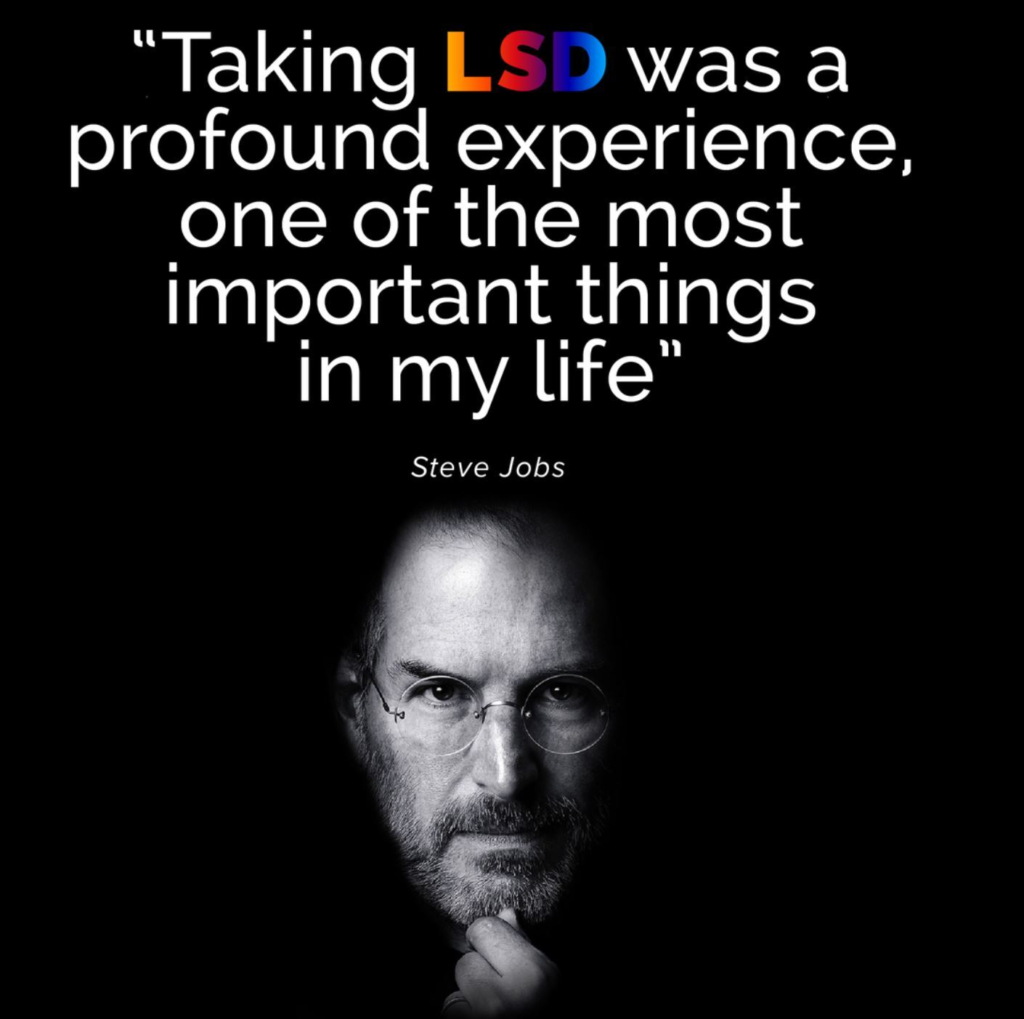
While responsible use of psychedelics has many upsides (e.g., long-lasting positive attitude adjustments, a renewed sense of wonder, greater joy for life, helping users to find purpose), psychedelics are not toys and there are also significant risks. In the worst case, they can trigger psychosis, cause PTSD, or induce HPPD – all of which are discussed shortly.
This article is about taking “normal” doses of psychedelics. I discuss microdosing, and my experience with it, separately here.
Personal experience of a friend
A friend got interested in psychedelics after reading Sam Harris’ article“Drugs and the Meaning of Life”.
In total, he has had six larger-dose experiences in the range of 100-300mcg LSD-equivalent. All of them were very meaningful to him and after all, but one, his sense of purpose increased – at least temporarily.
He has never had a mystical-type experience, nor were any of his experiences “life-changing” (at least not in a first-order consequence). For him, the insights only lasted for about a couple of weeks at best, after which they were slowly reduced to “conceptual knowledge”.
However, during the periods that followed he often made some important decisions, some of which have had significant real-world effects on his life.

For him, the most important part is that psychedelics are the best tools he knows of to give him death-bed clarity (a term used by Tim Urban, WaitButWhy, in his article on personal growth). As Tim Urban says, having death-bed clarity before death-bed happens allows him to actually do something about it while his life is still happening.
While constant death-bed clarity is not compatible with a normal life, occasionally he wants death-bed clarity to get his priorities straight and to potentially course-correct. Therefore, in terms of true productivity, psychedelics have done a lot for him.
In fact, working with psychedelics was among the most productive and insightful things he ever did. Some of his experiences were helpful to stay on a meaningful path and to realize where his life and values were out of alignment. Many times, he emerged with either a better understanding of himself or it was a catalyst for a new project, such as creating a personal blog about biological self-optimization.
Other than the risks and dangers associated with higher doses of psychedelics (discussed shortly), the major thing he dislikes is that for 1-2 days after taking psychedelics his energy levels take a hit, presumably due to the counterregulation to the neurobiochemical firework these drugs tend to reliably cause.
Of note, my friend found that if he grinds the shrooms to powder, then puts them in a cup and adds lemon juice, then lets it sit for 5 minutes, and then adds some hot water, the shrooms are much stronger. The weak acids in lemons help to dissolve the chitin as well as accelerate the conversion from psylocibin to psylocin, which is the active ingredient.
He prefers LSD over psylocibin because LSD feels more “punchy”, cleaner, and also feels like having a crush on the universe vs. psylocibin feels less “magical” to him. Unfortunately, LSD lasts all day. Furthermore, LSD is more dangerous in terms of HPPD.
How it works
Psychedelics such as psilocybin or LSD work on the serotonin system. Serotonin is more thoroughly discussed here: A Brief Introduction to Neurotransmitters.
Psychedelics are agonists at a specific serotonin receptor, the 5HT2A receptor, also dubbed “the door to perception”. Given that the 5HT2A receptor is widely expressed throughout the brain, there is no single underlying mechanism of action, but the psychedelic experience is due to a combination of different effects.
I want to reduce the discussion to two key features, which I think account for much of how psychedelics work.
#1: Psychedelics “throw open the gates”
The thalamus is a brain region of nuclei that have a “gatekeeping function”. That is, salient information (e.g., stimuli with high information density, information connected to one’s own persona, etc.) is amplified and relayed to the cortex. This includes sensory information (e.g., olfaction, hearing, vision, interception, touch) as well as cognitive information.

What kind of information is amplified and how strongly it is co-regulated by the nucleus reticularis, which is a thin shell of neurons surrounding and encapsulating the thalamus. Neurons in this “nucleus” express high levels of 5HT2A receptors, and psychedelics are thought to somehow reduce activity in these neurons. That is, psychedelics disinhibit the overall thalamic gating function.
Therefore, psychedelics literally “throw open the gates”. By disinhibiting the thalamus, cortical activity is amplified, whether it is of a sensory nature (e.g., vision, interception, hearing, taste) or cognitive nature (i.e., thoughts). If sensory transmission is amplified, this can cause users to feel intensely present in one’s surroundings. For example, when psychedelics are used in nature, people report being hyperaware of everything. Conversely, if cognitive activity is amplified, this can cause users to go on a deep inward journey.
While stimulants generally increase order in the brain, psychedelics tend to increase disorder (entropy), presumably due to an increase in thalamic disinhibition resulting in cortical hyperconnectivity.

#2: Psychedelics disrupt activity in the default mode network
Another key mechanism of psychedelics is their effect on the so-called “default mode network” (DMN). The DMN is comprised of a number of key brain regions that are active at rest (e.g. while looking out of the window). Most of the time, this so-called “mind-wandering” causes users to experience thoughts related to self, such as for example, one’s connection to other people.
It is thought that the DMN generates the sense of self and coordinates everything that pertains to the self (e.g., ego, memories, wants, fears, etc.). In depression or many other mental disorders, the DMN is often overactive, and people are constantly ruminating and closed in on themselves.
Below is an image of a DMN connectome, comprising the medial prefrontal cortex, the posterior cingulate cortex & precuneus, and the angular gyrus.

Psychedelics cause the coordination of this network to temporarily disintegrate, which – at its most extreme form – can induce a state of so-called “ego death”, during which users feel the loss of boundaries between self and others. Hence, users feel connected to everything and everyone, often accompanied by a loss of time perception.
What is the matter with psychedelics and neuroplasticity?
One of my friends who reportedly never dreams, dreams for about 2 weeks after taking psychedelics, pointing to effects in neuroplasticity. Another friend (and doctor), who has been on every antidepressant under the sun says that the only thing that truly cures his depression is psylocibin. He takes 2g once per week. Reportedly, he feels little to no “trippy” effects but somehow cures his depression.
It took a couple of weeks for everything to settle down but he has now been depression-free for about 10 months, after struggling with depression for roughly 30 years, including multiple hospitalizations and one suicide attempt. He believes that the trip itself is much less important than the effect of psychedelics on neuroplasticity, something that recent literature seems to bear out as well.
Subscribe to the Desmolysium newsletter and get access to three exclusive articles!
On a molecular level, some of the antidepressant effects of psychedelics are somewhat similar to ketamine. A short 15 min to 1 h stimulation of cultured cortical neurons with ketamine or LSD leads to neuronal growth that persists long after the compounds have been removed from the culture media. Moreover, after psilocybin administration, a higher density of dendritic spines is observed in the mPFC of the mouse for at least 1 month.
Both ketamine and psychedelics mediate an increase in both structural as well as functional plasticity (e.g., neuritogenesis, spinogenesis) that presumably follows similar molecular mechanisms (e.g., activation of TrkB and mTOR), both in vitro as well as in vivo. For both compounds, cotreatment with rapamycin reduces their effects (at least in vitro – whereas in vivo effects are more complex and rapamycin potentially prolongs the antidepressant effects).
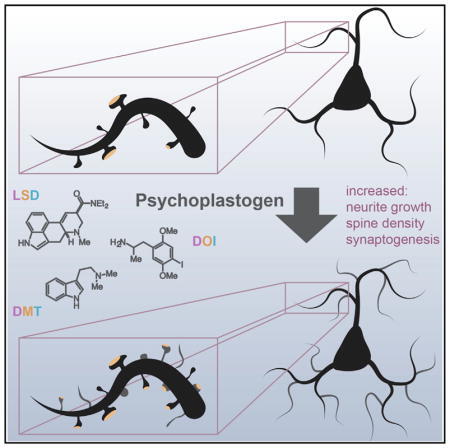
The psychedelic-induced increase in neuroplasticity can also be abolished with ketanserine, a high-affinity 5HT2A-antagonist, indicating that psychedelics mediate their effects on neuroplasticity through the 5HT2A-receptor and not some other obscure target.
In addition to the 5HT2A-receptor-mediated changes in neuroplasticity, there is a huge increase in neocortical activity and neurons of different cortical areas are more connected compared to normal waking life. This means that areas that normally do not communicate much, suddenly do communicate a lot.
Because a mammalian neocortex adapts depending on how it is used, these rarely used “random” connections are strengthened (”use it or lose it”), and new non-ordinary memories are formed. This results in the growth of hippocampal neurons as well as trophic adaptations of synapses & dendrites in a similar (but more potent) way as does environmental enrichment (e.g., traveling).
In this sense, psychedelics are basically massive environmental enrichment “in a pill” and are potentially capable of keeping a brain in a more rejuvenated state.
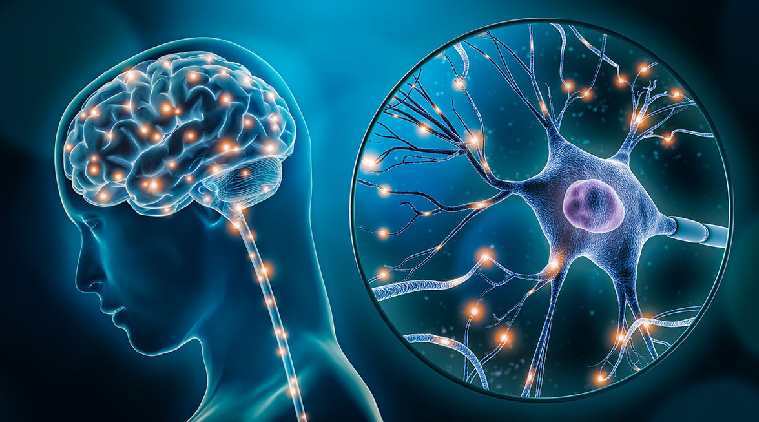
Moreover, psychedelics also have powerful perceptual effects (”a year´s worth of psychotherapy in one afternoon) and in the same way a traumatizing experience (e.g., loss of a loved one, romantic rejection) can trigger neurobiochemical depression, so can a “winning” experience (e.g., finding love, major life success, meaning-giving psychedelic experience) have top-down effects on depression.
Which of these three effects is most important for their antidepressant effects is currently unknown but I speculate that it probably depends on the person.
I discuss neuroplasticity in more detail here.
Psychedelics in the treatment of mental health disorders
Psychedelics can not only inspire, but they can also be healing. Psychedelics are especially helpful when it comes to the treatment of certain mental health issues characterized by rigid thinking (e.g., depression, OCD, and eating disorders).

Whereas conventional antidepressants primarily target neurobiochemistry, which then secondarily affects thoughts and behaviors, psychedelics may directly address the psychological meat of things. A single potent session can lead to powerful (top-down) changes, which then may help people with rewriting the story they are telling themselves and with taking action – the same things a good psychotherapist can do (but rarely in a single session).
Somebody said, “Taking psychedelics is like years’ worth of psychotherapy in a single afternoon”, and for many people, this may be true.
However, psychedelics are by no means the panacea for depression they are made out to be. For example, psychedelics do little for individuals who are unmotivated, lethargic, anxious, low excitement all of the time due to issues with lifestyle, hormones, or neurotransmitters. I discuss this in more detail here: What Kind of Antidepressant Should I Choose?

Unfortunately, policy does not follow science.
I find it unfortunate that “good” drugs (drugs that often have a positive effect on the user and others) like LSD or psilocybin are illegal, while “bad” drugs (drugs that often have a negative effect on the user and others) like ethanol are legal.
Unfortunately, policy does not agree with scientific consensus but rather reflects historical convention. In fact, it is speculated that LSD was mostly banned for political and social reasons because it had a tendency for “hippifying” people – and hippies were against hardcore capitalism and the Vietnam War. National security threat.

Risks and dangers
Short of doing something stupid while tripping, there are a couple of dangers associated with the use of psychedelics – a bad trip, psychedelic-induced artificial sense of meaning and truth, “hippification”, and hallucinogen persistent perception disorder (HPPD). I will now discuss each of these individually.
Danger #1: Doing something stupid while tripping
A colleague of mine was tripping with three friends in her living room when one of them stood up, walked to the window, and jumped out of the 10th floor. He died and they were all taken in by the police while the LSD was still in full force. She is deeply traumatized by this experience.
My lawyer shared a similar story where one of his colleagues leaped from the balcony while high on psychedelics at a party. He died as well.
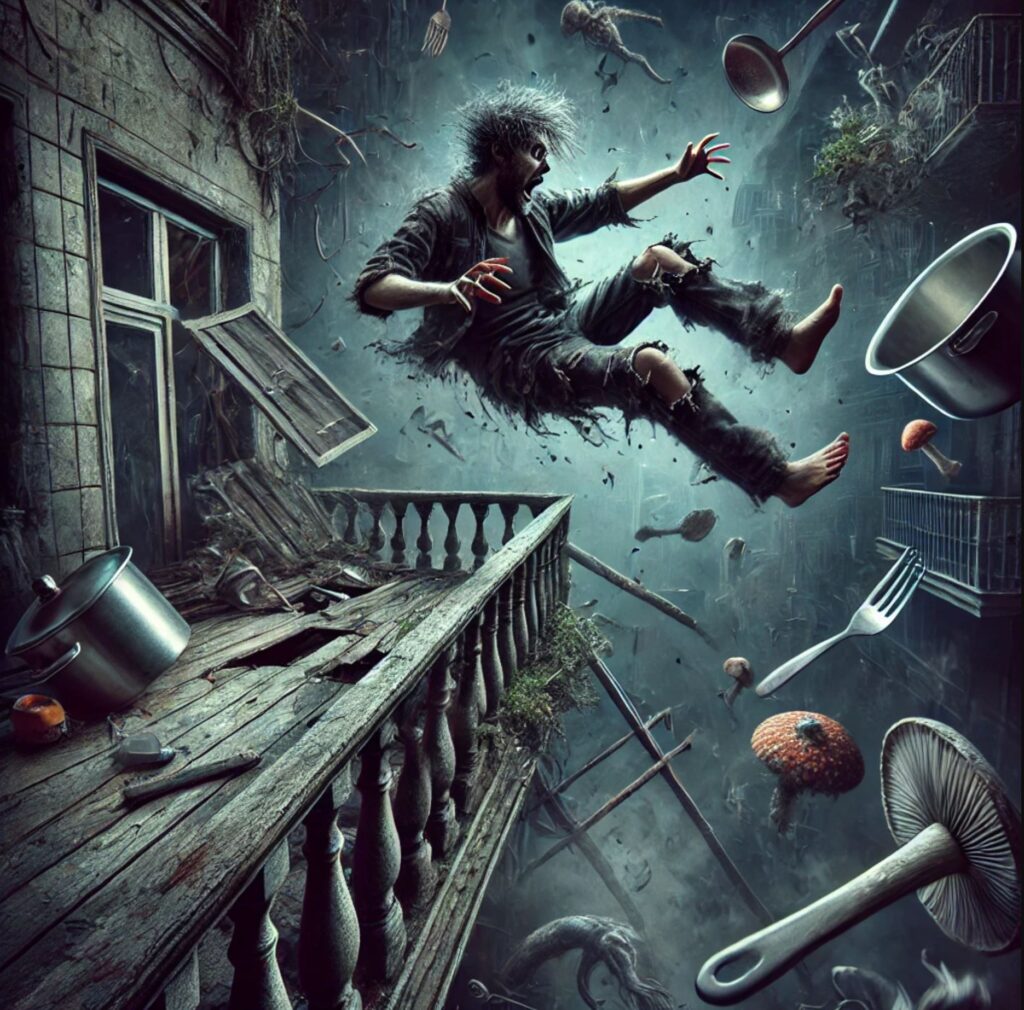
The best friend of a woman I recently dated took psychedelics to master his depression and anxiety. On psychedelics, he was shown that he needed to “jump through the portal”. He lept through the middle of a circular staircase. He survived but split his head open, fractured his skull, and required 2 weeks of hospital stay.
While not super common, these things do happen. To avoid these situations, it is probably best to have a sober sitter – particularly at higher doses.
Danger # 2: The bad trip
Psychedelics can be quite dangerous in the sense that these substances can take the user to places he/she did not intend to go. Just as a good trip can have a positive impact on one’s subjective and objective life, a bad trip can leave someone devastated for a long time, in severe cases causing post-traumatic stress disorder (PTSD).
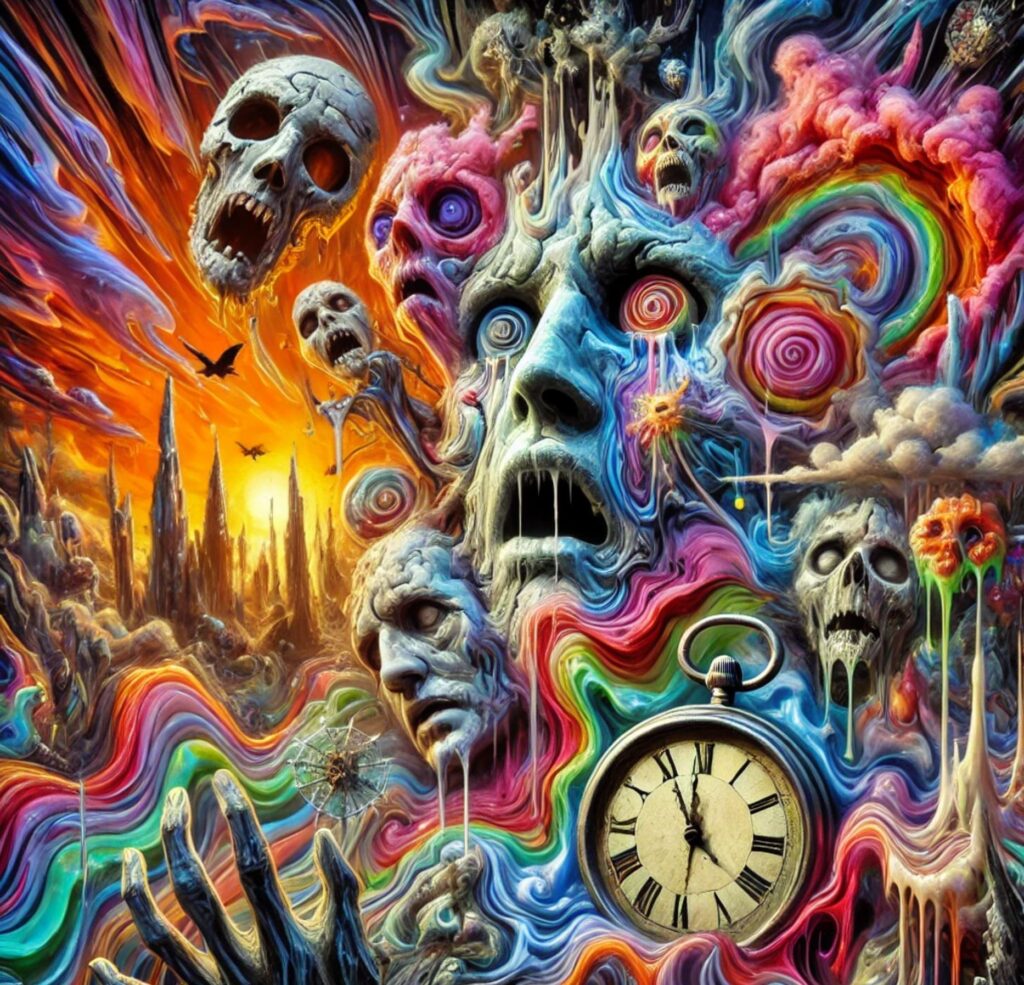
A friend of mine had an experience with DMT, which was what I imagine a near-death experience to be. Supposedly, there is nothing like a brush with death that is going to wake someone up to the wonder of life. For him, it wasn’t this way.
After his “DMT accident” (I won’t go into detail about what exactly happened), he was thrown into a deep, personal struggle for a couple of months. His inner life was chaos and he started to struggle with solipsism for quite some time.
For some reason, the launch seems to be very important for the overall quality of the ensuing hours. A friend swears by using lavender oil in an oil dispenser to nudge the trip in a positive direction. Having a benzodiazepine on hand can help as well (especially psychologically).
For ending a bad trip, cyproheptadine (a potent 5HT2AR antagonist, among other things) is perhaps more effective than benzodiazepines and less dangerous than antipsychotics. Nowadays its only real clinical use is in the treatment of serotonin syndrome (e.g., MDMA overdoses), but it can also be used to counter the effects of psychedelics. I used it once to end a semi-bad trip – 16mg of cyproheptadine and I was back to normal in about 1 hour. A friend uses it occasionally to help him sleep after taking LSD (which is particularly long-acting).

Danger #3: Psychedelic-induced artificial sense of meaning and “truth”
During his fourth LSD trip, a friend was listening to classical music. He felt a profound understanding of the music’s “essence”, which he attempted to capture by scribbling it down in a notebook. Upon reviewing his notes the following day, he found multiple variations of the phrase, “This is so meaningful. How can this be so meaningful?” spanning two pages.
This experience led him to realize that psychedelic drugs stimulate the perception of meaning and truth – which is both a feature and a bug.
For instance, if a deeply religious person were to consume psychedelics, it is more likely than not that psychedelics would make the person even more convinced of their previously held “truth”, analogous to how the Aztecs & Maya believed their mass sacrifices of hundreds (if not thousands) of people per day were the right thing to do (reportedly while under the influence of psychedelics).
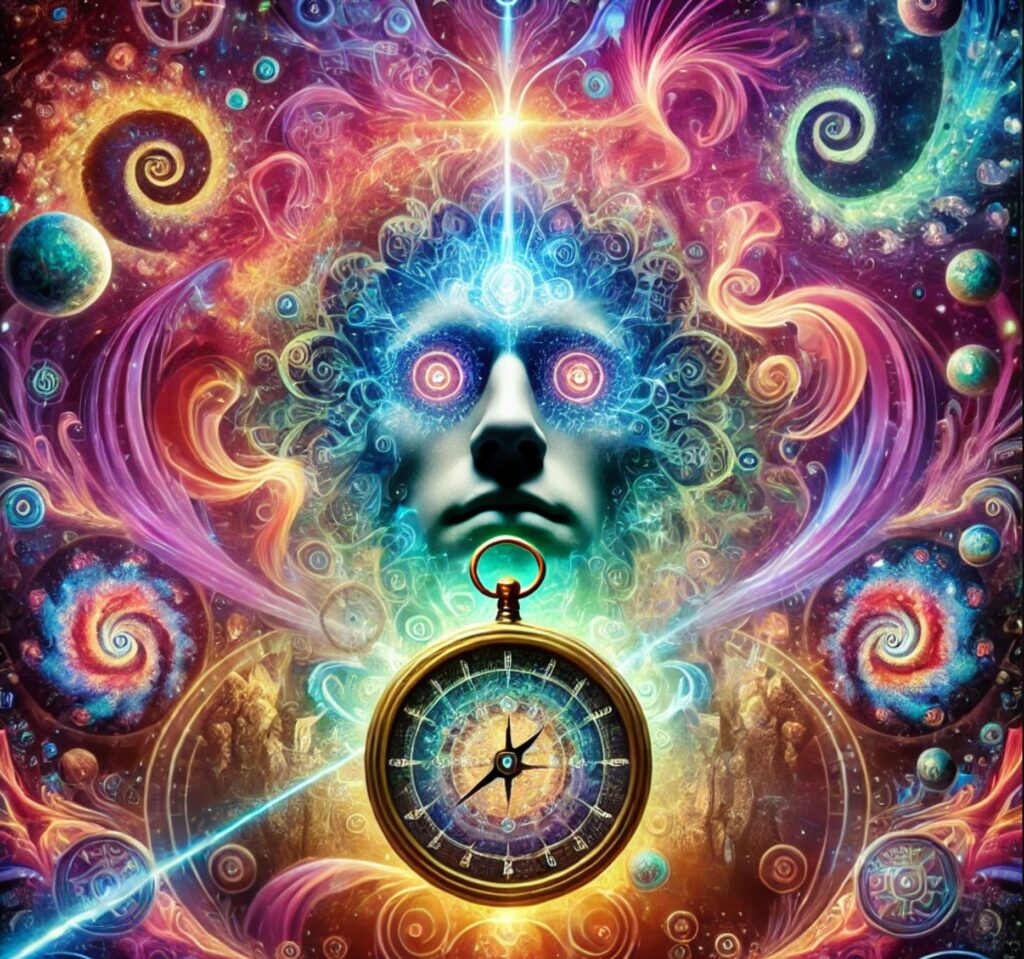
Likewise, individuals who take psychedelics to aid in decision-making may feel that they have discovered the “correct” answer deep within themselves, but their decision-making process may have been guided more by an artificial psychedelic-induced sense of meaning and truth than rational introspection.
Danger #4: Hippification
An acquaintance of mine was on his path to becoming an accountant. After taking psychedelics a couple of times, he quit university and became a Thai Chi instructor. This seems to be a common theme.

Psychedelics are powerful movers. They can change people’s worldviews – usually a shift from materialism towards spirituality and mysticism. Similarly, psychedelics can shift the focus from “productivity” to “enjoying life” – and, for some people, once they have tried it they cannot “unsee” and do not want to go back. Depending on the person and context, this can be good or bad.
Nonetheless, “hippification” is a real risk. It seems that the less an individual is set in his/her worldview, the greater the “risk”. It is difficult to overstate how important it is to understand this, as it often has life-changing implications for the individual – and not necessarily in a good way.

Subscribe to the Desmolysium newsletter and get access to three exclusive articles!
Danger #5: Hallucinogen persistent perceptive disorder (HPPD)
HPPD is real and seems to be vastly underreported – at least in the medical literature. Because this article is already very long, I wrote a short article on the topic: HPPD and Other Potentially Permanent Effects of Psychedelics.

Sources & further information
- Scientific review: On Perception and Consciousness in HPPD: A Systematic Review
- Anecdotes: Reddit – r/HPPD
- Opinion articles: Scott Alexander has two great articles on this:
Other experience reports
For a discussion of the molecular correlates of well-being, and links to accounts of various related molecules I have experimented with, read here.
For a full list of experience reports click here.
Sources & further information
- Opinion article: Sam Harris – Drugs and the Meaning of Life
- Scientific review: Potential Therapeutic Effects of Psilocybin
- Scientific review: The entropic brain: a theory of conscious states informed by neuroimaging research with psychedelic drugs
Disclaimer
The content available on this website is based on the author’s individual research, opinions, and personal experiences. It is intended solely for informational and entertainment purposes and does not constitute medical advice. The author does not endorse the use of supplements, pharmaceutical drugs, or hormones without the direct oversight of a qualified physician. People should never disregard professional medical advice or delay in seeking it because of something they have read on the internet.
